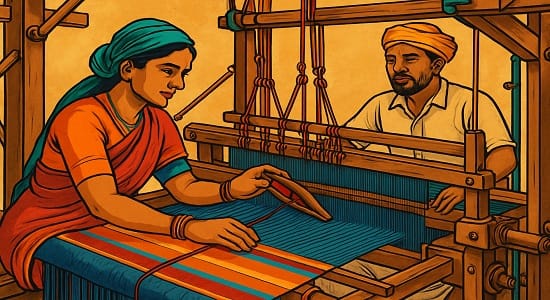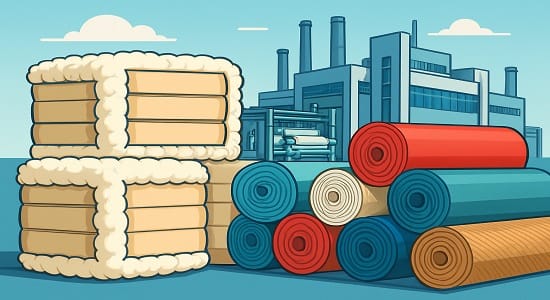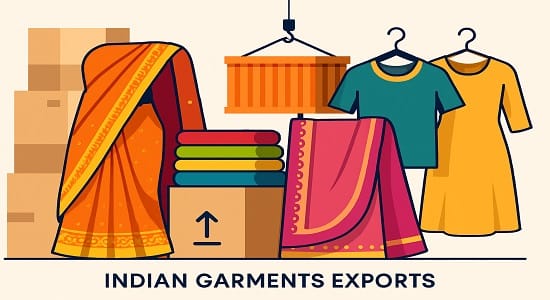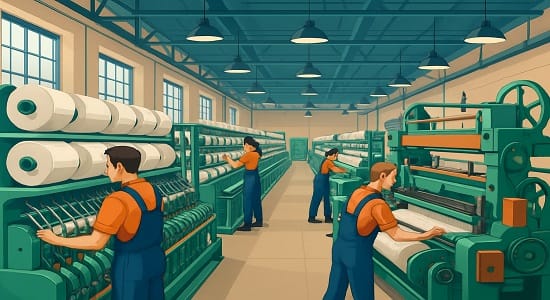Textile Sector In India: Growth, Opportunities, And Challenges For Investors
The textile sector in India is one of the largest and oldest industries. From hand looms to technology-driven factories, textiles are the key to India’s economy, employment, and exports. For retail investors, the textile industry offers a combination of traditional strength and new growth opportunities.

Importance of the Textile Sector in India
- Contributes ~2.3% to India’s GDP
- Provides direct employment to over 45 million people
- Accounts for 12% of India’s exports
- India is the second-largest textile producer in the world
Structure of the Textile Sector
The textile sector can be broadly divided into two categories:
Organized Sector:
- Factories with machinery and large-scale production
- Examples: Reliance Industries (polyester), Arvind Mills, Raymond
Unorganized Sector:
- Hand looms, handicrafts, and small-scale enterprises.
- Creates employment in rural India.
- Examples: Khadi, hand loom clusters in states.
Growth Drivers of Textile Sector in India
Key Growth Factors :
- Growing domestic demand on the back of rising disposable income and urbanization.
- Government patronage through schemes such as PLI (Production Linked Incentive) for textiles.
- Good export potential – Indian textiles are being exported to the US, EU, and Middle East.
- E-commerce revolution – Online apparel and fashion driving textile consumption.
Challenges Facing the Textile Sector :
- Severe competition from Bangladesh, Vietnam, and China
- Over-reliance on cotton – susceptible to monsoon and climate change
- Global export compliance and sustainability concerns
- Volatility in raw material prices
Textile Exports from India (2023–24 Data)
| Category | Export Value (USD Billion) | Share in Total Exports |
|---|---|---|
| Cotton Textiles | 10.2 | 25% |
| Ready-Made Garments | 16.3 | 40% |
| Man-Made Textiles | 7.5 | 18% |
| Hand looms Others | 6.0 | 17% |

Major Companies in Textile Sector in India :
- Reliance Industries (Polyester & fabrics)
- Arvind Mills (Denim & fashion fabrics)
- Raymond (Apparel & garments)
- Trident Group (Home textiles & towels)
- Vardhman Textiles (Yarn & fabrics)
Government Initiatives :
- PLI Scheme: ₹10,683 crore fund for man-made fiber and technical textiles.
- National Technical Textile Mission (NTTM) aimed at enhancing innovation.
- Make in India and Atmanirbhar Bharat programs encouraging domestic production.
Investment Opportunities in Textile Sector :
- Equities of listed textile firms such as Raymond, Arvind, Vardhman, Trident.
- Textile ETFs and Mutual Funds (when available).
- Export-oriented businesses riding global demand.
Investor Tip: Invest in companies with robust export presence, diversified product portfolio, and sustainability initiatives.
FAQs on Textile Sector in India :
Q1: Why is the textile industry vital to India?
- The textile industry is among the biggest employers and a major contributor to GDP and exports.
Q2: Which states are principal textile centers in India?
- Gujarat, Maharashtra, Tamil Nadu, and Punjab are principal textile centers.
Q3: Is it better to invest in textile firms?
- Yes, particularly firms with strong exports, state-of-the-art facilities, and emphasis on technical textiles.
Q4: What are technical textiles?
- These are fabrics applied in sectors like healthcare, construction, agriculture, and defense.

Conclusion
India’s textile industry is a confluence of modernity and tradition. Though the industry faces issues, government assistance, increasing domestic demand, and potential exports make it an attractive sector for retail investors. Investors who watch out for sustainability and international competitiveness can discover long-term growth prospects here.
Disclaimer: This blog is for educational purposes only. The securities or companies mentioned are examples, not recommendations. It does not constitute investment advice. Please conduct your own research before making any investment decisions

Wishing you happiness every day.
There is clearly a bundle to identify about this. I consider you made some good points in features also.
Hey! This post could not be written any better! Reading through this post reminds me of my good old room mate! He always kept talking about this. I will forward this page to him. Pretty sure he will have a good read. Many thanks for sharing!
I was studying some of your content on this website and I conceive this website is very instructive! Keep posting.
I do agree with all the ideas you’ve presented in your post. They’re very convincing and will definitely work. Still, the posts are too short for novices. Could you please extend them a little from next time? Thanks for the post.
I have read several good stuff here. Certainly worth bookmarking for revisiting. I wonder how much attempt you put to create this type of excellent informative site.